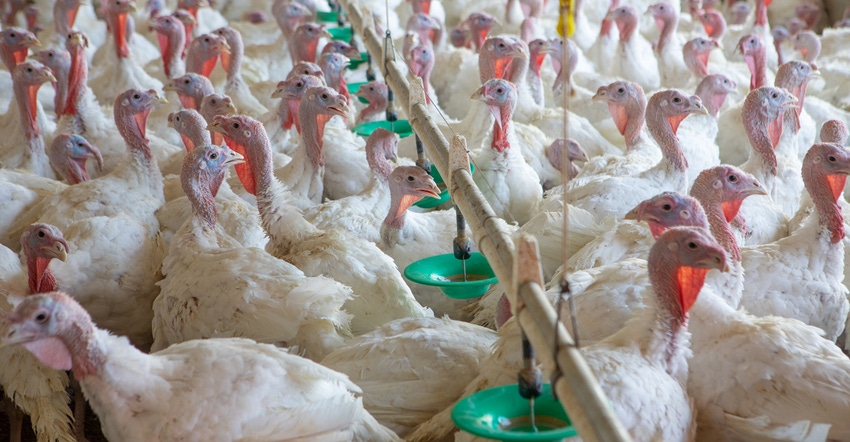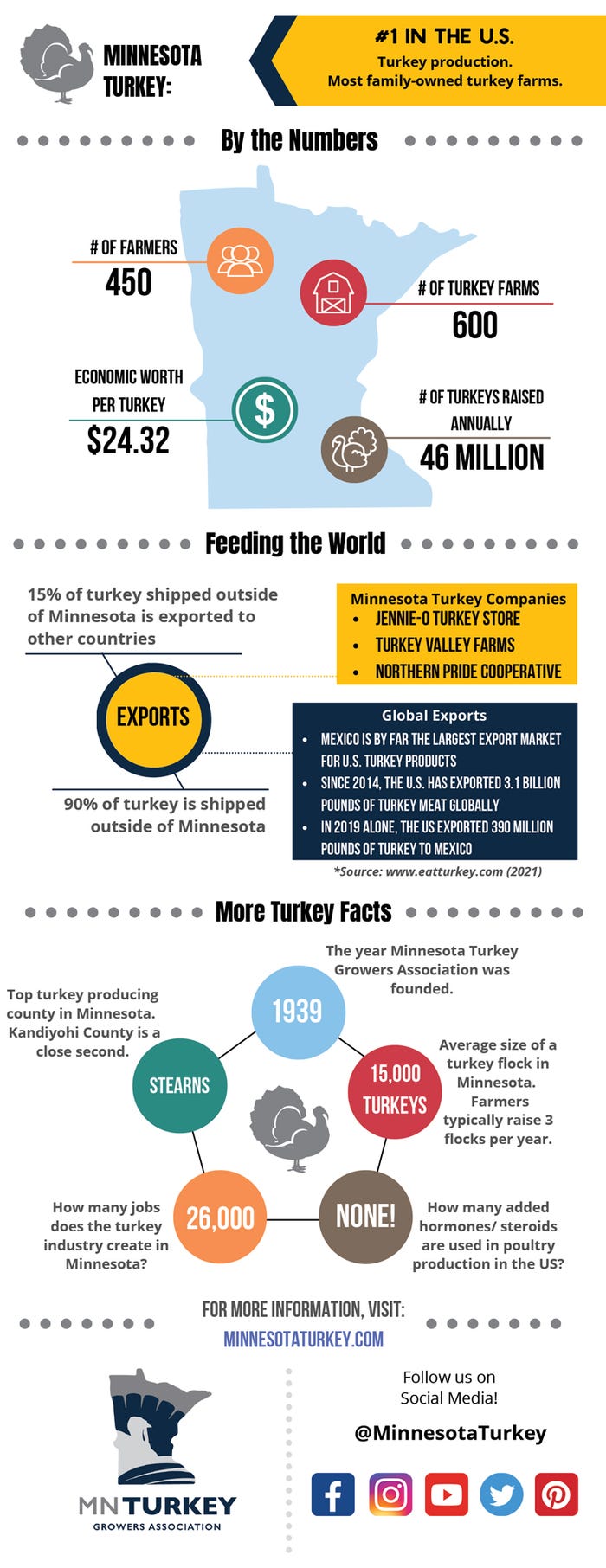
With Thanksgiving around the corner, many of us are starting to think about family get-togethers and menus. As a main entrée, turkey often graces the table at those meals.
Turkey growers in Minnesota have been busy with producing healthy birds to put on consumers’ tables this season.

MINNESOTA STATS: Here’s an overview of the Minnesota turkey industry at a glance. (Courtesy of MTGA)

“The farmers I speak to feel confident they can fill every Thanksgiving order,” says Hannah Halldorson, communications specialist with the Minnesota Turkey Growers Association and Minnesota Turkey Research & Promotion Council. “Our farmers have made adjustments in production to help meet the different needs of consumers when it comes to sizes of turkey, too. There is a turkey for every table.”
What to know about Minnesota turkey
In recognition of the turkey industry in the state, here are some facts from MTGA and MTRPC:
• Minnesota has long been the turkey capital in the U.S., and some would argue in the world. In 1939, turkey farmers formed the Minnesota Turkey Growers Association.
• Since then, Minnesota has consistently ranked No. 1 in U.S. turkey production. Every year, Minnesota turkey farmers raise between 40 million and 42 million birds.
• A homegrown commodity, Minnesota turkeys are raised by the largest number of independent turkey farmers in the nation.
• Minnesota is home to three operators who bring turkeys from the farm to the table: Jennie-O Turkey Store in Willmar, Turkey Valley Farms in Marshall and Northern Pride Cooperative in Thief River Falls.
• Minnesota is also home to Select Genetics, the country's largest turkey hatchery.
• Minnesota’s 600 turkey farms and stakeholders generate more than $1 billion in economic activity and provide more than 26,000 jobs in the state.

U.S. STATS: Here’s an overview of the U.S. turkey industry. (Farm Progress)

And here are a few fun facts:
• Turkey packs more protein and less fat compared to other similar cuts of chicken and beef. When Neil Armstrong and Edwin “Buzz” Aldrin ate their first meal on the moon, their foil food packets contained roast turkey and all the trimmings.
• Benjamin Franklin proposed the turkey as the official United States bird. Dismayed by news of the selection of the bald eagle, Franklin replied, “The turkey is a much more respectable bird, and withal a true original native of America.”
• About 46 million turkeys are eaten around Thanksgiving nationally.
• June is National Turkey Lovers Month.
• Turkeys have approximately 3,500 feathers at maturity.
• The costume worn by Big Bird on Sesame Street is rumored to be made of turkey feathers.
• Only tom turkeys gobble. Hen turkeys make a clicking sound.
• Turkey eggs are tan with brown specks and are larger than chicken eggs.
• The “caruncle” on a turkey is the red-pink fleshy growth on the head and upper neck.
• The “snood” is a long, red, fleshy growth from the base of the beak that hangs down over the beard.
• The “wattle�” is the bright red appendage at the neck.
• The “beard” is a black lock of hair found on the chest of a male turkey.
About the Author(s)
You May Also Like






